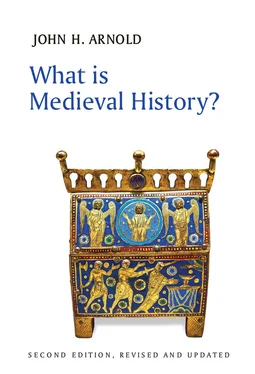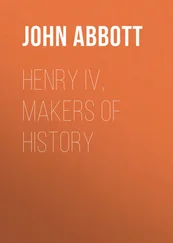This was not the only thing written on the image. There was a sign, like a reversed ‘N’, and a name: Amaymo . The name of a demon.
‘Bartolomeo, behold this image,’ said Matteo, ‘which I have made to bring destruction to the pope who persecutes me.’ What Matteo wanted of Bartolomeo was for the priest to help finish the magical object, by suffusing the image with incense from zuccum de mapello (‘What is zuccum de mapello ?’ asked Bartolomeo’s interrogators in Avignon, some months later. A kind of poison, he explained. But, he emphasized, he did not want to go along with Matteo’s plan). 1
Bartolomeo told Matteo that he had no zuccum de mapello , and was unable to help. He then left, threatened by the duke to keep silent. But some time later Scoto came to see him, to ask his advice on the details of some books of sorcery. Prompted by Bartolomeo, Scoto again showed him the statue. It had been finished by a different sorceror from Verona, and was inscribed with a new word, Meruyn . All that now need happen, Scoto explained, was to hang the statue up for seventy-two nights, placing it night after night in a fire. As, little by little, the fire consumed the image, so would its target, little by little, be destroyed.
And that was all he knew, Bartolomeo explained to the cardinal, the abbot, the legate and the scribe. He had come to Avignon to warn Pope John XXII that his life was in danger.
But that was not the end of it, because some months later, on 11 September 1320, Bartolomeo was once again before this gathering of interrogators, explaining what had happened to him in the intervening period. When he had returned to Milan the previous March, he said, he had immediately been arrested and brought before Scoto. The Milanese knew that he had been to Avignon, and suspected that he had revealed the plot concerning the statue. He was imprisoned, in chains, for weeks. Scoto came to interrogate him many times. Bartolomeo told him that he’d gone to Avignon to treat a sick man, a knight who was under a magical curse. Scoto did not believe him. Matteo was very angry with him, Scoto explained; it would be better to confess now. ‘Come, Bartolomeo, tell the truth, why you went to the Curia’, Scoto said at one time. ‘Because you know absolutely that in the end it will happen that you tell the truth; and if you will not speak courteously, you will end up speaking under torture. Although I want you to know that I do not want to place you in torment, however in the end it will have to be, that you are tortured, unless you spontaneously wish to say the truth.’ Bartolomeo stuck with his story.
And he was tortured. Stripped, his hands tied behind him to a stick, a heavy stone was placed on his legs, while Scoto’s assistants yanked his arms back. They pulled him up, then released him, pulled him up, then released him. He was then untied, and led back to his cell. Look, said Scoto, we can do this to you every night. Every night until you die. Just confess.
But Bartolomeo did not confess. What saved him eventually was the intervention of another powerful northern duke, Galeazzo Visconti, Matteo’s son. Galeazzo had him freed, apologized for what had happened, hoped that he was all right. But Galeazzo was also in on the plot, and inveigled Bartolomeo into helping once again: the statue must be freshly suffused, and Bartolomeo was the man to do it – by implication, a proof of Bartolomeo’s loyalties. And by implication, prison, torture and death the alternative. Let me think about it, Bartolomeo pleaded. Very well, said Galeazzo; but ‘you should know that I have had Master Dante Alighieri come to me regarding this matter that I’m asking of you.’ Good, said Bartolomeo: I would be very pleased if he did what you are asking. But no: Galeazzo really doesn’t want to ask Dante to do it – because he knows that Bartolomeo can do it, will do it.
Two days later Bartolomeo agreed, set about finding more zuccum de mapello , and retrieved the statue from Galeazzo. He returned with it to his home town – and then he fled to Avignon once more.
And where is the statue?, asked his interrogators. I brought it with me, Bartolomeo replied. He produced a bundle tied with twine, unwrapped it, and drew out a silver figure in the shape of a man. And it was just exactly as he had described it, as the interrogators attested for the written record. 2
There the story ends, Bartolomeo’s story at any rate. The struggles between John XXII and the Visconti continued for some time, and other witnesses raised against them describe their impiety, their heresy, their usury and other crimes. The pope believed himself subject to further magical attacks, and encouraged inquisitors to be on the lookout for sorcery. The Visconti themselves survived as a family for a long time, ruling Milan late into the fifteenth century without break. But of Bartolomeo the priest we know nothing more.
At first sight this is what one might call a very medieval tale. It involves tyrants, a pope, intrigue, torture and magical practices of a kind now usually described as ‘superstitious’. We may have a fairly vivid mental image of some of the more lurid parts of the story, not least because this kind of middle ages has inspired (directly or indirectly) various aspects of modern culture. Film, television, novels and comics have pictured a dark, grubby, bloody middle ages: The Name of the Rose, Braveheart or the various films about Joan of Arc, for example. There is a similar template for future barbarism: Mad Max, Robocop and The Hunger Games (Katniss Everdeen having distant kinship with Robin Hood) all bear the imprint of a certain kind of medievalism. ‘I’m gonna get medieval on yo’ ass’, as Marcellus Wallace threatens his erstwhile torturers in Pulp Fiction . George R. R. Martin’s Game of Thrones famously replays the horrors of late medieval politics with added sex and dragons. So, in one sense, Bartolomeo’s experiences are familiar.
But there is more here than immediately meets the eye. Matteo Visconti’s plot against the pope may look typically ‘medieval’, but it contains elements that, on reflection, may surprise us. And it sits at an intersection of themes, lives, geographies and forces that are far more complex – and interesting – than those stereotyped depictions, which Umberto Eco once called ‘the shaggy middle ages’, would suggest. 3Take magic. Everyone ‘knows’ that the middle ages was a superstitious age, full of witches, demons, spells and the suppression of the same by the Inquisition. But the magic in this story is located not where we might expect to find it: not in the simple hut stuck at the end of the village, inhabited by a poor widow and her cat, but in learned Latin books, read and owned by clerics, right at the heart of the city and intellectual culture. This was not in fact unusual: while healers and soothsayers were found in rural medieval parishes, the kind of magic described here was very much a clerical subculture, available only to those with a Latin education. The roots of this magic were not ‘pagan’ in the sense of pre-Christian primitivism; nor was it, within medieval terms, a set of irrational ideas. Learned magic derived in part from classical scholarship, in part from ideas about hidden (‘occult’) natural forces and in part from a long tradition of Christian theology, which saw demons as constantly present – and, in certain circumstances, harnessable to good or bad ends. Learned magic and science were intimately connected, and would continue to be for several centuries to come.
Nor were ecclesiastical attitudes to this magic always quite what one might expect. The Inquisition did not automatically pursue its practitioners, not least because there was no such thing as the ‘Inquisition’ in the sense of a permanent and central tribunal until the mid-sixteenth century (with the exception of Spain, where the Spanish Inquisition began under secular direction in 1480). While inquisitors into heretical depravity were appointed directly by the papacy, their practical powers were largely dependent upon the cooperation of secular authorities in any particular area. Furthermore, local bishops, parochial priests and monastic orders could have different ideas from inquisitors and the papacy about desirable orthodox practice and the demands of the faith. The ‘Church’ was a complex and in some ways wildly heterogeneous edifice. The procedures that were used when interrogating Bartolomeo were inquisitorial in the sense of being a legal technique, and one could describe the cardinal, abbot and legate as ‘inquisitors’ only while they were engaged in interviewing the priest. Torture was involved in our story, but although it had indeed been permitted since 1252 in heresy trials, in this case, as we saw, it was the secular authorities in Milan that tortured poor Bartolomeo.
Читать дальше




